Get PeakVisor App
Sign In
Search by GPS coordinates
- Latitude
- ° ' ''
- Longitude
- ° ' ''
- Units of Length

Yes
Cancel
Share ×

Scan the QR code and open PeakVisor on your phone
❤ Wishlist ×
Choose
Delete
Arusha National Park is a small national park that’s located in northern Tanzania in East Africa. Of the 8 named mountains in the park, Mount Meru is the tallest at 4,562 m (15,262 ft) in elevation. Mount Meru also holds the distinction of being Tanzania’s second tallest peak after Kilimanjaro, and it is the fifth tallest peak in Africa.
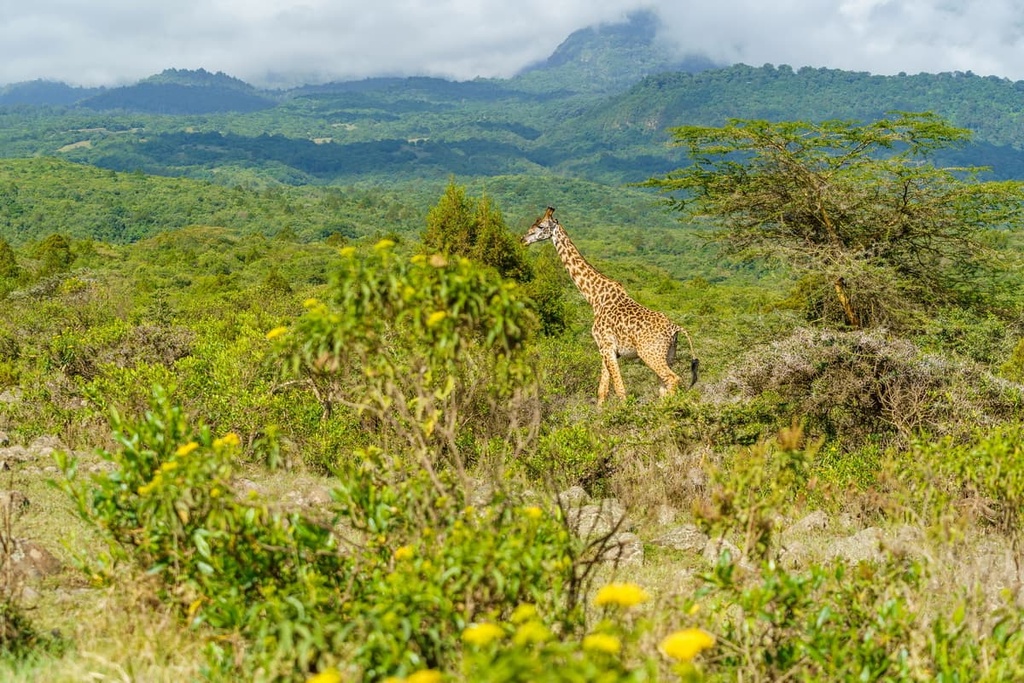
Arusha National Park is a protected area in the northern part of the East African nation of Tanzania that covers 137 sq. km (53 sq. mi) of grasslands, forests, and alpine ecosystems. It is located about 60 km (35 mi) away from Kilimanjaro International Airport and lies just to the north of the city of Arusha.
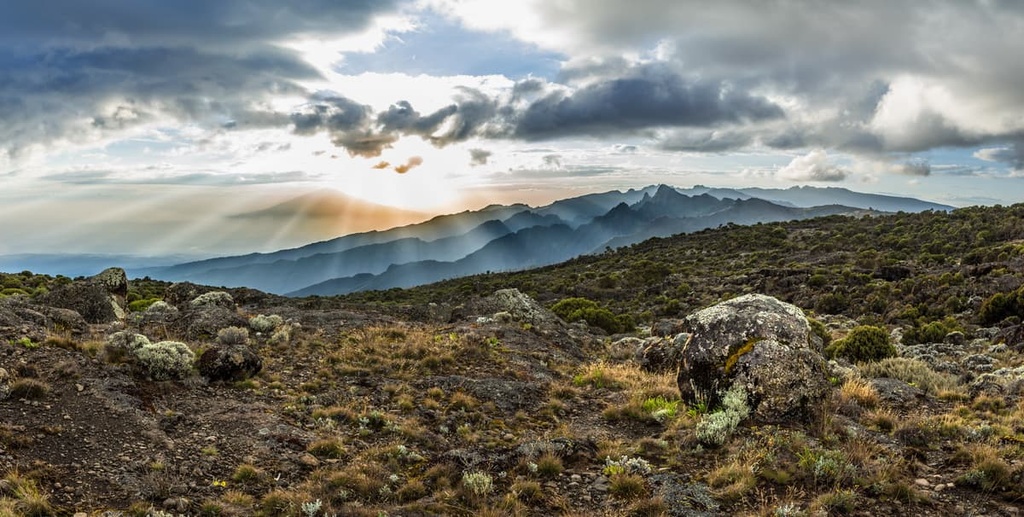
The park is also home to Mount Meru, the second tallest peak in Tanzania and the fifth tallest peak in Africa. Streams from Mount Meru flow into the Pangani River Basin, which provides drinking water to millions of people in northern Tanzania.
Besides Mount Meru, the national park includes the Momella Lakes, which are seven shallow alkaline lakes that boast varying shades of blue and green because of their high algae content. The park is also home to verdant highland forests and the Ngurdoto Crater. The crater, which is sometimes referred to as the “Little Ngorongoro Crater,” has a diameter of about 3 km (2 mi).
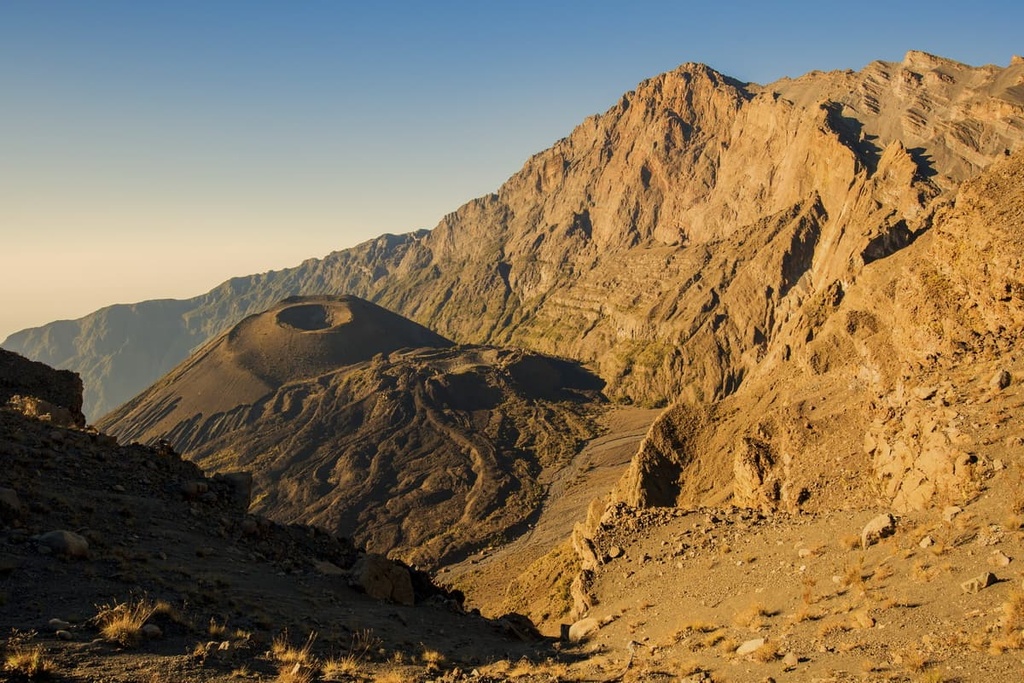
Arusha National Park is located close to a number of other protected areas, including the nearby Kilimanjaro National Park. Tarangire National Park and Lake Manyara National Park are both also located only a couple hours’ drive away to the west of Arusha National Park.
Mount Meru was created as a result of the Great Rift Valley system, which began forming about 20 million years ago.
As the tectonic plates that underlie the area started to pull apart, the Earth’s crust thinned. This created a vent that allowed superheated steam to push molten lava up toward the surface of the Earth. Building pressure within these vents eventually led to a series of explosive eruptions.
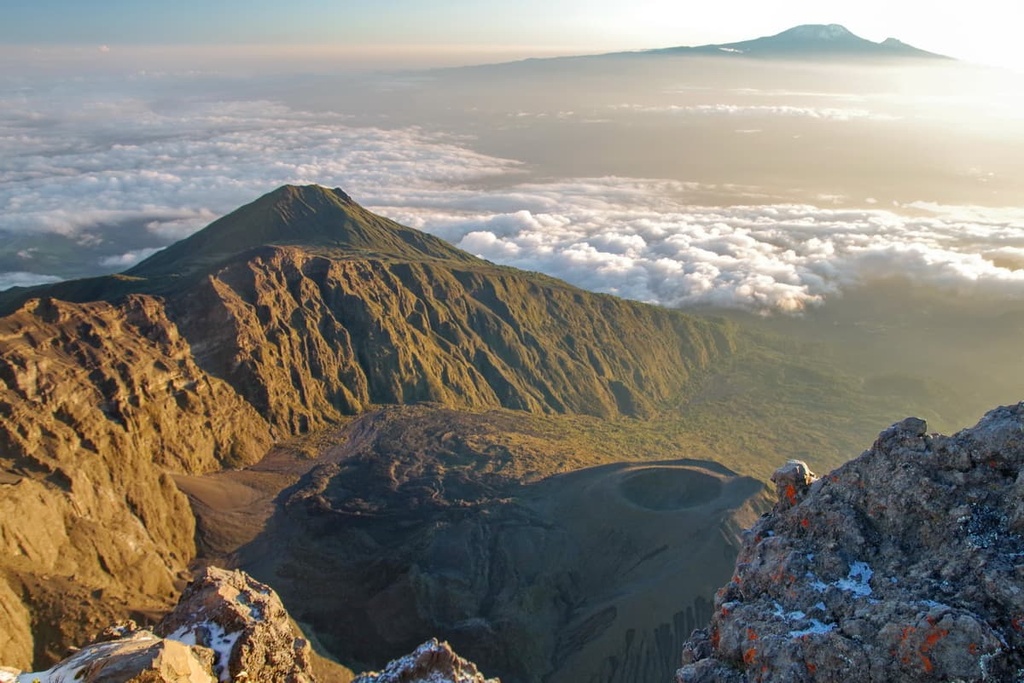
The dormant stratovolcano of Mount Meru is part of a younger volcanic system that exists on top of older and faulted volcanic terrain. A series of eruptions that began several hundred thousand years ago and continued until about 80,000 years ago also shaped the volcano we see today.
One of Mount Meru’s most notable features is its horseshoe-shaped caldera. It contains an ash cone that rises to an elevation of about 1,067 m (3,500 ft), which happens to be one of the youngest volcanic features on the mountain.
The eastern side of the caldera collapsed in the Momella event about 250,000 years ago and cascaded down across the landscape, spreading debris as far as 35 km (20 mi) away. This collapse caused a mudslide onto the surrounding plains. As the mud dried, it left behind depressions that became the basins for the shallow Momella Lakes.
Mount Meru most recently erupted in 1910, leaving behind a small lava flow on the northwestern side of the ash cone.
The Ngurdoto Crater, a caldera that now encompasses grassy plains, is located in the southeastern part of the park. The crater’s pear shape indicates that it was once two small volcanic cones, rather than one, and that these two cones eventually collapsed to form the caldera that we see to this day.
Arusha National Park is sometimes overlooked in favor of the better-known national parks in Tanzania’s northern circuit, like Kilimanjaro.
But while it does not boast the same variety of carnivores as some of the region’s other parks, Arusha National Park is still home to many classic East African wildlife species. It also offers visitors the option of walking safaris, something that is not possible in national parks where large predators are abundant.
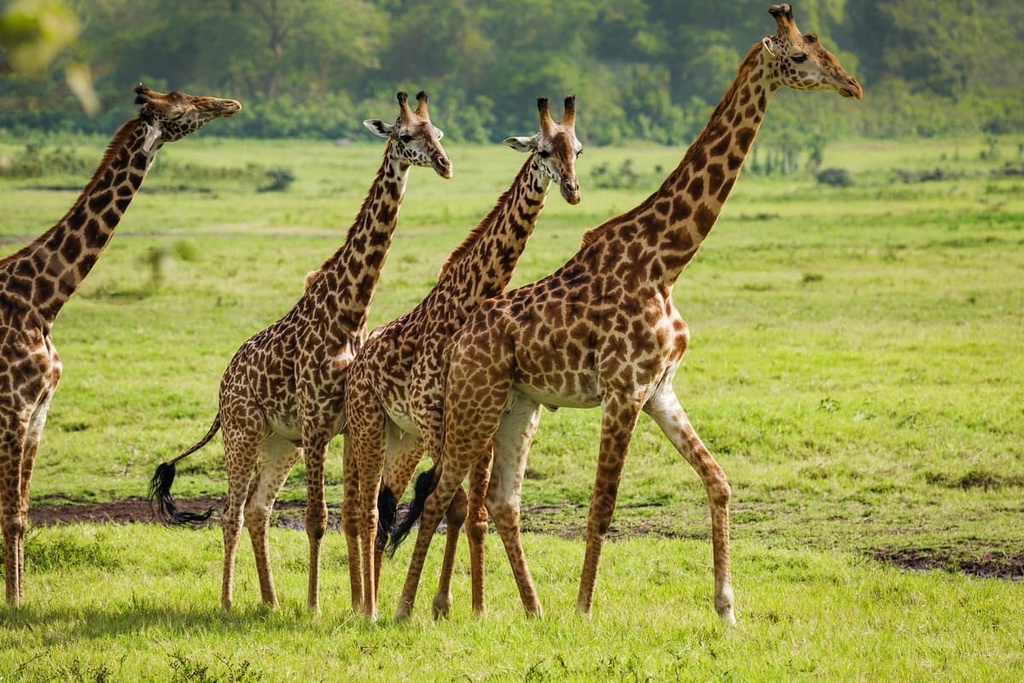
Some of the most common wildlife species that you can see in Arusha National Park include blue monkeys, vervets, black and white colobus monkeys, zebras, giraffes, reedbucks, waterbucks, duikers, dik-diks, cape buffalo, hippos, and warthogs.
Elephants are rare in Arusha and lions don’t live in the park, but there is a chance to spot hyenas or even an elusive leopard during a trip to the region.
Additionally, flamingos sometimes congregate on the edges of the Momella Lakes. Numerous other birds live along the water and in the forest around Arusha including turacos, trogons, bee-eaters, and hornbills.
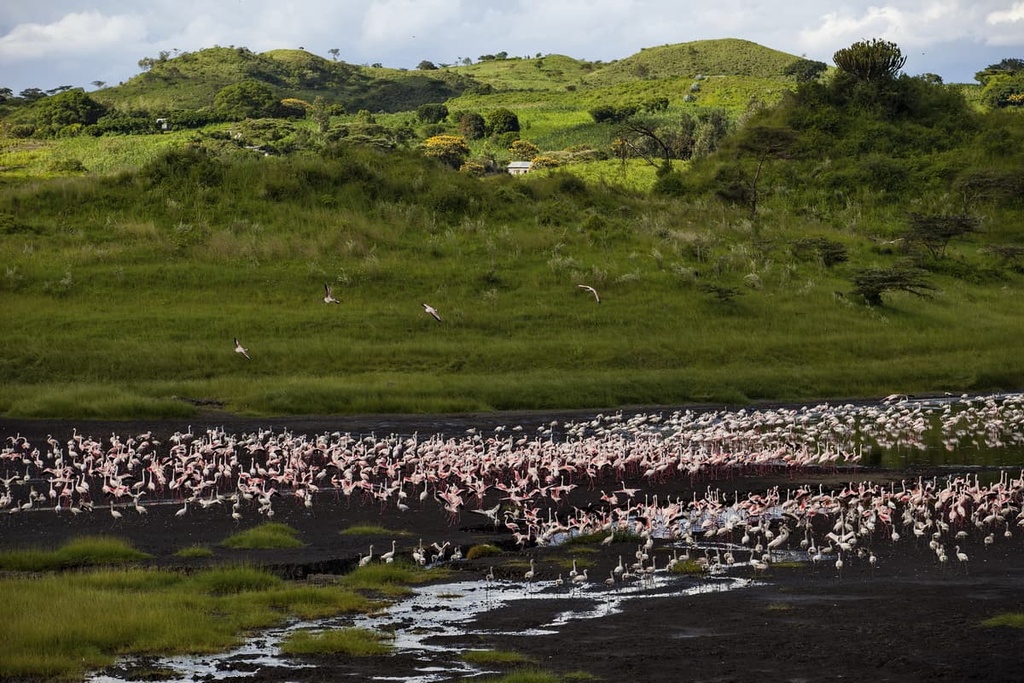
Peak tourist activity in Arusha takes place during the dry season, which occurs from June through October. During this time, the vegetation is less dense in Arusha, and it is easier to spot wildlife as they gather near water sources. On the other hand, some of the perks of traveling to Arusha during the wet season include the extra-lush landscape and the potential for discounted rates at lodges and on tours.
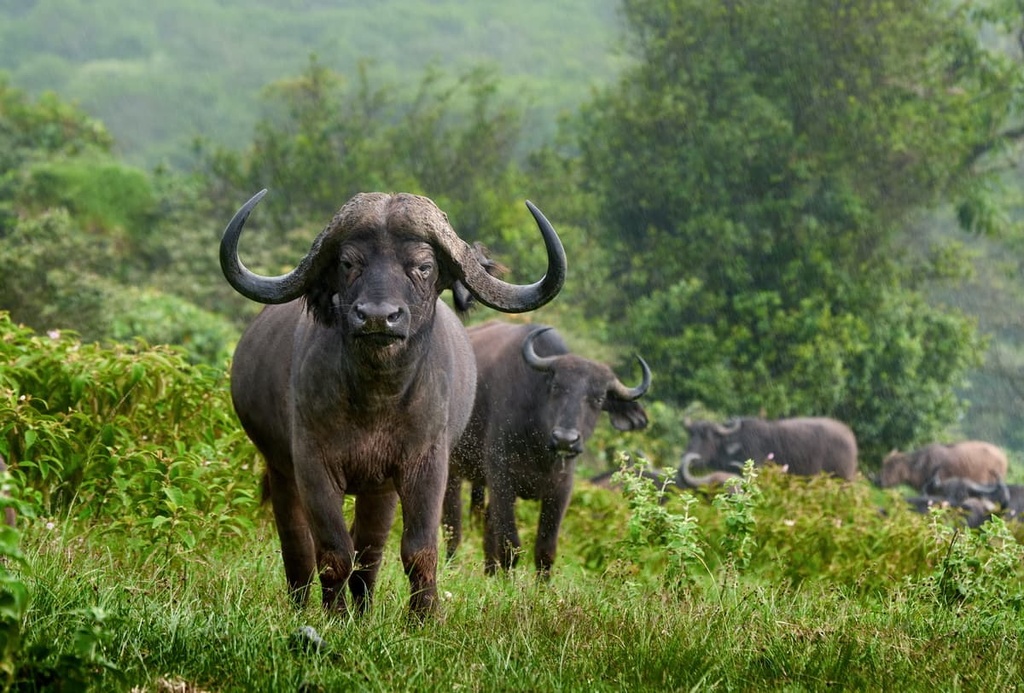
The area around Mount Meru is the homeland of the Wameru (Meru) tribe, who are a Bantu ethnic group. They arrived in the region and occupied the slopes of Mount Meru starting 300 to 400 years ago.
Additionally, the region between Mount Meru and Mount Kilimanjaro is also part of the traditional homelands of the Maasai, who are a major ethnic group that lives throughout parts of Kenya and northern Tanzania. The Maasai were displaced from the region during the mid-twentieth century.

Many of the communities that settled in the region that is now Arusha National Park were traditionally pastoralists who practiced subsistence farming. Nowadays, however, the Arusha region is experiencing a period of rapid development and much of the land in the area is being converted for commercial agriculture and urban expansion.
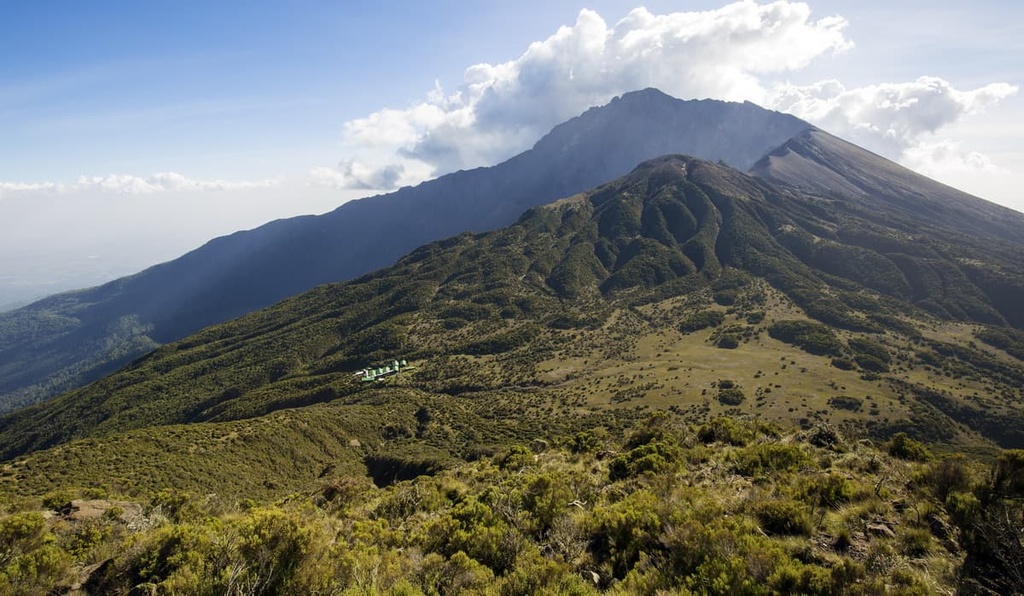
Mount Meru itself was first climbed in 1904 by a German and Swiss geographer by the name of Fritz Jäger. The park was established in 1960 in order to protect the mountain and its surrounding landscapes.
There are three main options for hiking in Arusha National Park. The best-known place to hike in the park is Mount Meru. The two other options are a half day hike to the Tululusia Waterfall or a guided walking safari within the park. Additionally, visitors can go canoeing in one of the Momella Lakes or book a horse riding safari in the park.
With that in mind, here’s a quick look at some of the best hikes in Arusha National Park to check out during your next trip to the region.
The fifth highest mountain in Africa and the second tallest in Tanzania, Mount Meru is a popular hike that is sometimes overlooked by those hoping to climb Kilimanjaro. Some hikers use Mount Meru to acclimatize before attempting Kilimanjaro, but the hike is rewarding in its own right and is perfect for those looking for a more affordable climb.
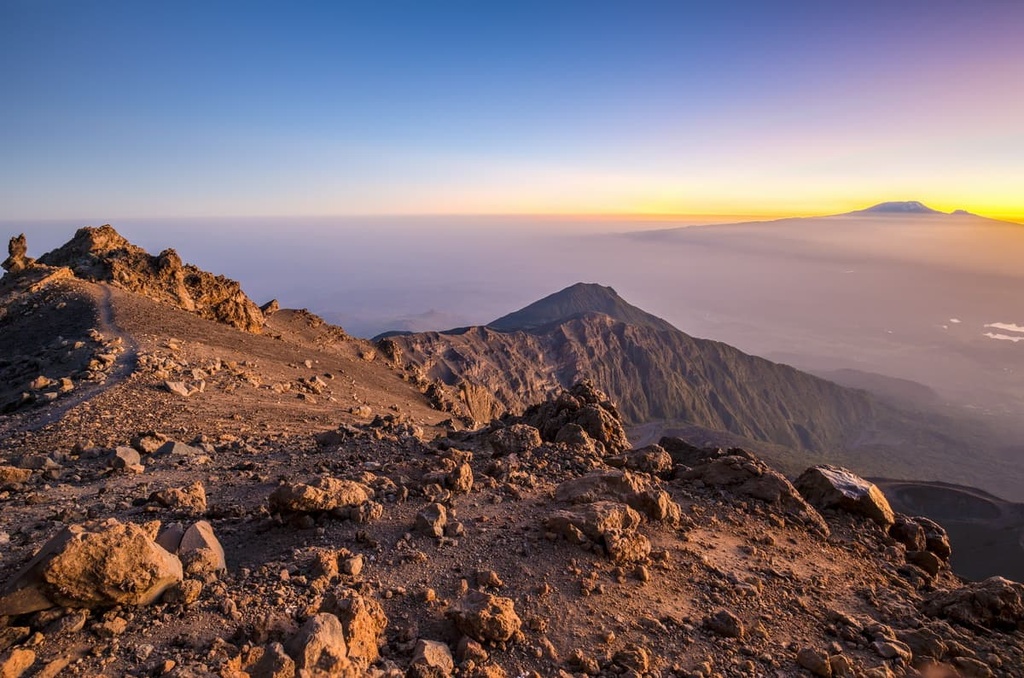
Although it is lower in elevation than Kilimanjaro, the steeper slopes on Mount Meru make for a more strenuous ascent. It can be done in three or four days, though a four-day climb is considered standard for the mountain.
There is only one main route up Mount Meru that leaves from Momella Gate. Two rustic but comfortable huts, Meriakamba and Saddle, serve as accommodation options on the trail.
Note that a guide is required to climb the mountain. Hiking groups on Mount Meru are often accompanied by an armed guard, at least on the first portion of the hike, due to the chance of wildlife encounters in the forests along the mountain’s lower slopes.
The trail to the Mount Meru Tululusia Waterfall is a short hike that typically only lasts about an hour and a half. This hike departs from Momella Gate and it leads you to a nearly 30 m (98 ft) tall waterfall. Keep in mind that guides are required on this hike for safety reasons.

One of the big appeals of Arusha National Park is the opportunity for walking safaris, which typically aren’t practical elsewhere due to the possibility of encountering large carnivores like lions.
There are nearly 50 km (30 mi) of walking safari trails in Arusha National Park, many of which lead to the crater rim where visitors can take in panoramic views of the region. Hikers on walking safaris in Arusha National Park must be accompanied by a park ranger to ensure a safe experience for all while viewing wildlife on foot.
Arusha National Park is located only 60 km (37 mi) from Kilimanjaro International Airport, which lies midway between the cities of Arusha and Moshi. The small but popular town of Usa River, which is situated just 25 km (15 mi) from Momella Gate, is also located between the city of Arusha and the airport, so it’s a great starting point for journeys into the park.
Here’s a quick look at some of the best towns and cities to check out during a trip to Arusha National Park.
Arusha houses just over half a million people and is the main center for tourists visiting national parks on the northern circuit of Tanzania. The nearby Mount Meru is also visible on clear days from the city.
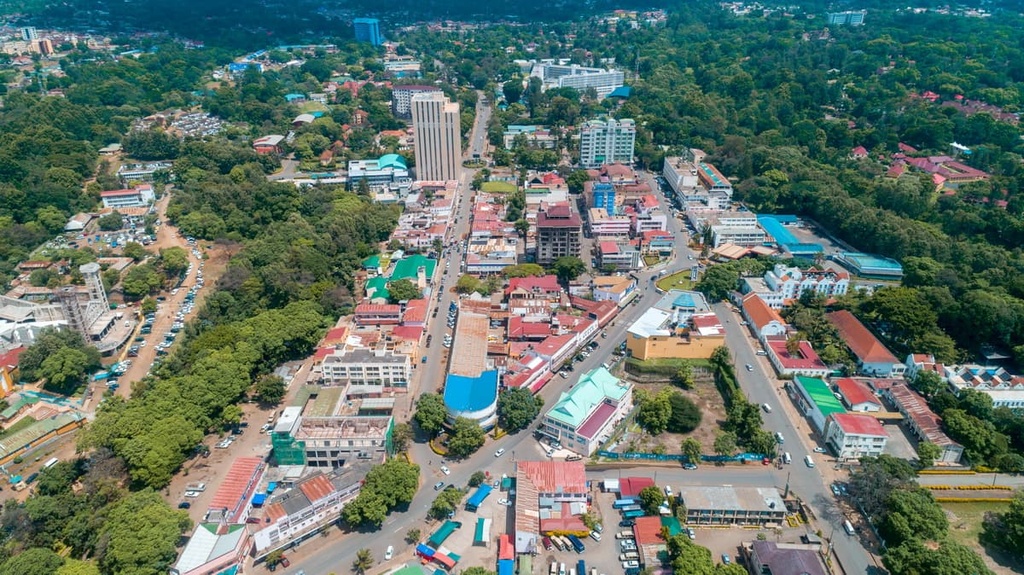
While in Arusha, you can explore the city’s streets, which are filled with stalls selling food and clothing. Alternatively, you can stop by the city’s Maasai Market for an enormous selection of handmade crafts and artwork.
In Arusha, you can find a range of accommodation options from budget-friendly local hotels to luxury lodges. Getting to the city is normally fairly straightforward, too, as it is located within driving distance of two airports (Arusha and Kilimanjaro).
With a population of about 200,000 residents, Moshi is a charming smaller city that many people visit in order to hike Kilimanjaro and Mount Meru. There are numerous day hikes offered in the lush forests around the city that take you to visit waterfalls and small-scale coffee growers. The popular Kikuletwa Hot Springs are also located just a short drive away from the city.
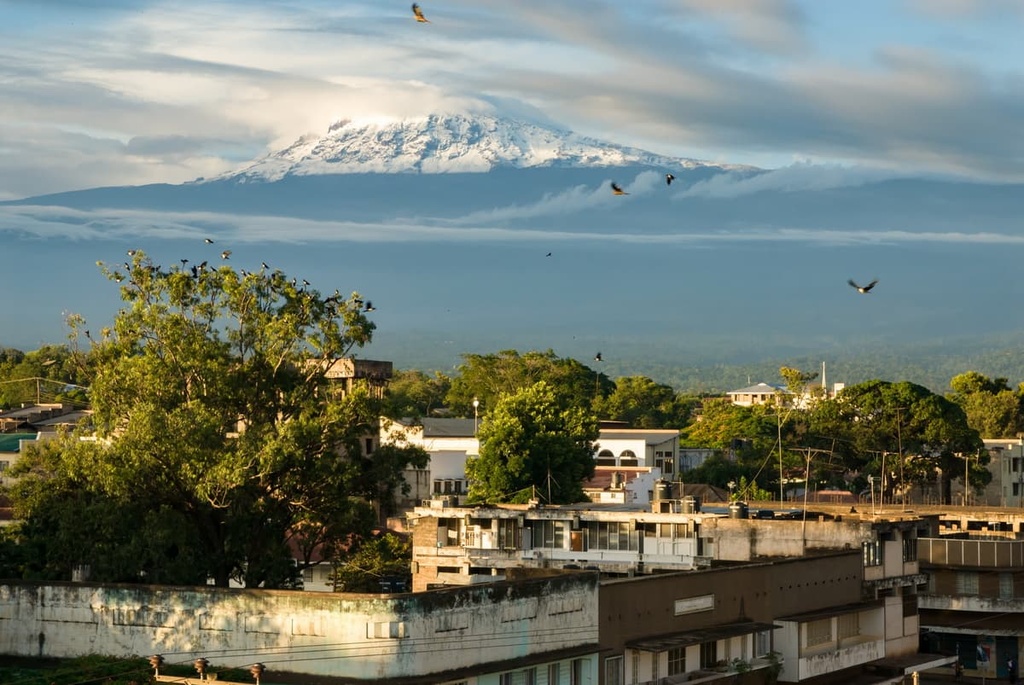
Visitors in Moshi will find hostels, hotels, and fancy lodges both in and around the city. The city is less overwhelming than the bigger and busier Arusha, and there are plenty of restaurants that are situated within walking distance of the town’s center.
Home to around 25,000 people, Usa River is a small town that’s located between Arusha and Kilimanjaro International Airport.
Usa River is situated immediately to the south of Arusha National Park and it offers a good array of amenities. There are numerous lodges in the town and along the road leading up to Momella Gate, so you have plenty of accommodation options to choose from in the area.
Due to the fact that it is home to a well-known language school and several district administrative offices, Usa River has a wider variety of offerings for visitors to enjoy than most small towns in northern Tanzania. While in Usa River, you can explore the popular local coffee shop and bakery Tanz-Hands, hike in the surrounding forests, or go for a horseback ride at the two nearby lodges that offer day rides and riding safaris.
Explore Arusha National Park with the PeakVisor 3D Map and identify its summits.








